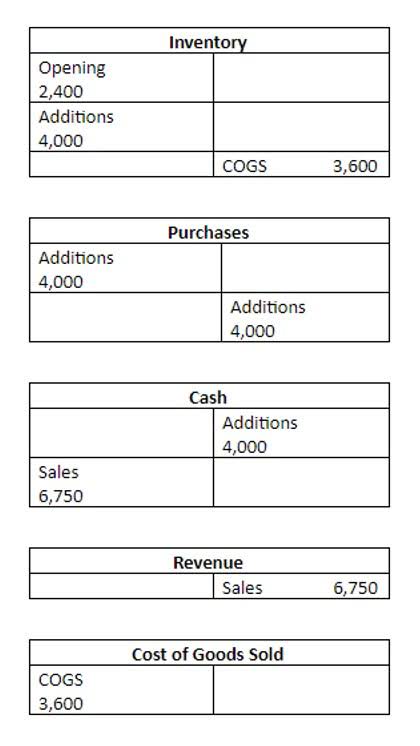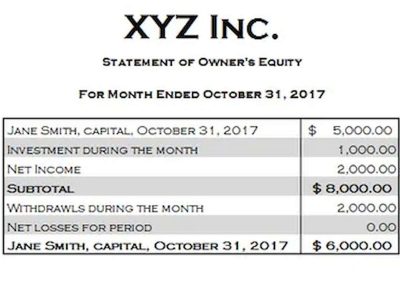Content
- Accounting Terms: XYZ
- What is Opening Balance Equity in QuickBooks?
- Click on the video below to watch: How to clean up Opening Balance Equity in QuickBooks Online
- How can we enter an Opening Balance for Equity on other Balance Sheet Accounts?
- How to Set Up an Account in QuickBooks Online?
- What is the need for Opening Balance Equity in QuickBooks?

In reality, we usually don’t have all those account balances when we want to setup our QuickBooks file and start invoicing customers and paying bills. Here’s how to enter an opening balance for accounts you create in QuickBooks. If you’re trying to edit an opening balance when reconciling an account in QuickBooks Online with your bank or credit card statement, see fix an opening balance to match a bank statement. Ideally, the balance in the Opening Balance Equity account should be zero, since all opening balances should balance out. However, if they don’t, the Opening Balance Equity account holds the difference. The company’s accountant will usually make additional adjusting entries to correct this.
- Know how to enter, clear, and close opening balance equity in QuickBooks.
- Now, you can go back to the “Chart of Accounts” window, select the Opening Balance Equity account, and click on the “Delete” button.
- Eliminate manual data entry and create customized dashboards with live data.
- When the system is in balance, you can transfer opening balance equity from the QuickBooks to other equity accounts, such as retained earnings and a common stock.
- The initial investment made by the company’s owners or shareholders is recorded in the opening balance equity account to maintain the balance of the accounting equation.
If you’re able to locate the transaction using the changed transactions report, while in the report, select the transaction to edit them. Be careful entering the opening balances for accounts on your Balance Sheet. This includes Fixed Asset, Equity, Long-term Liability, Other Assets, Other Current Asset, and Other Current Liability accounts. Let’s first define what Opening Balance Equity is, and then we will look at what types of transactions affect it’s balance in QuickBooks Online. What should you do if you are working on a massive QuickBooks Online cleanup and you come across a mysterious balance in an account called Opening Balance Equity on the balance sheet?
Accounting Terms: XYZ
QB throws it in OBE when you create an account with a balance cause it do not know any better. You need to click “Start” to Export data From QuickBooks Desktop using Dancing Numbers, and In the export process, you need to select the type you want to export, like lists, transactions, etc. After that, apply the filters, select the fields, and then do the export.
After your file setup is complete, you should make the Opening Balance Equity account inactive. If you use the data file properly, there should never be a balance in Opening Balance Equity after you complete the data file setup. However, if QuickBooks users do not perform certain bookkeeping tasks accurately, QuickBooks will automatically offset entries to Opening Balance Equity.
What is Opening Balance Equity in QuickBooks?
The ‘Open Balance Equity’ account is a special clearing account used for setting up a new company file and should have zero balance. If you have inventory adjustments posted to this account, these adjustments need to be moved to the correct account. During the month, $78 is spent on electricity, $45 on phone, and $350 on rent.

If you find yourself with an opening balance equity account at the first of the month, don’t panic. It is simply an automated function programmed into accounting software demonstrating an issue with the previous term’s balance sheet. Opening balances can be entered into the company file in the form of a General Journal Entry for most Balance Sheet accounts using Opening Balance Equity as the offset account. Once all of the beginning balances are entered, the remaining balance in Opening Balance Equity can be apportioned between the proper equity accounts using another journal entry. Maintaining a record of the closing and opening balance in the financial accounts of your business is a pillar of strong accounting practises. This is one of the main aspects of managing your cash flow and keeping track of a company’s financial health.
Click on the video below to watch: How to clean up Opening Balance Equity in QuickBooks Online
Dancing Numbers is SaaS-based software that is easy to integrate with any QuickBooks account. With the help of this software, you can import, export, as well as erase lists and transactions from the Company files. Also, you can simplify and automate the process using Dancing Numbers which will help in saving time and increasing efficiency and productivity. Just fill in the data in the relevant fields and apply the appropriate features and it’s done. When the system is in balance, you can transfer opening balance equity from the QuickBooks to other equity accounts, such as retained earnings and a common stock.
Both allow you to borrow against your home equity, just in slightly different ways. With a home equity loan, you get a lump-sum payment and then repay the loan monthly over time. Enter the specific unpaid invoices or bills if your customers or vendors still owe you money from before the opening balance date.
Setting up accounts in QuickBooks Opening Balance Equity Online is a crucial step to ensure accurate tracking of your finances. With the right setup, you can keep tabs on your income and expenses, reconcile bank transactions, and generate detailed reports for better insights into your business. An account represents a specific financial entity, such as a bank account, credit card, or income source. For example, if you have multiple bank accounts for your business, you would set up separate accounts for each one to track their transactions individually. The Opening Balance Equity account is a clearing account created automatically by QuickBooks for use during data file setup. As you enter each beginning balance into QuickBooks the entry is offset to Opening Balance Equity.
- Save your changes and repeat this process for any additional categories you need to set up.
- If you’re able to locate the transaction using the changed transactions report, while in the report, select the transaction to edit them.
- Failing to close out this account could result in an unprofessional-looking balance sheet and potentially signify an erroneous journal entry in your QuickBooks accounting records.
- It shows the discrepancy between a firm’s assets and liabilities at the commencement of a new accounting period, such as the beginning of a new fiscal year or when a new company is formed.
- For example, if you want to track advertising expenses separately from other expenses, you might name the category “Advertising Expenses.”
- We’d love to tell you more or to book a live demo so you can see it in action for yourself.
Clearing/deleting the opening balance equity in QuickBooks is pretty simple. In practice, setting up a new accounting system usually involves many more accounts and the process can be quite complex, so working with an experienced accountant is recommended. Furthermore, using Dancing Numbers saves a lot of your time and money which you opening balance equity can otherwise invest in the growth and expansion of your business. It is free from any human errors, works automatically, and has a brilliant user-friendly interface and a lot more. In the Delete process, select the file, lists, or transactions you want to delete, then apply the filters on the file and then click on the Delete option.
QuickBooks also computes your profit or loss at the end of your fiscal year. If the business has paid for any goods or services in advance and has not received them yet, then enter the unreceived value here. You can use the Direct Connect Option by enrolling for the Direct Connect service which will allow you access to the small business online banking https://www.bookstime.com/articles/remote-bookkeeping option at bankofamerica.com. This feature allows you to share bills, payments, information, and much more. You could also set up a scheduled transaction to pay your rent, since the value of the rent is likely to be constant for the foreseeable future. Although you may be tempted to delete this account, it’s much better if you use it as it was intended.
